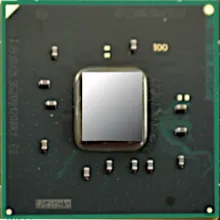
The Intel X99 chipset, codenamed "Wellsburg," was a high-performance platform primarily designed for enthusiast and professional users. It was compatible with Intel processors using the LGA 2011-3 socket. Key technical features of the X99 chipset included:
-
DDR4 Memory Support: The X99 chipset introduced support for DDR4 memory, which offered higher memory bandwidth and increased memory capacity compared to its predecessor, DDR3.
-
Increased PCIe Lanes: It provided a substantial number of PCIe lanes, allowing for multiple graphics cards and high-speed storage devices to be connected simultaneously. This was essential for multi-GPU configurations and NVMe SSDs.
-
Quad-Channel Memory: X99 supported quad-channel memory configurations, offering improved memory bandwidth for memory-intensive tasks such as video editing and 3D rendering.
-
USB 3.0 and SATA Express: The chipset included USB 3.0 support and SATA Express for faster data transfer rates with compatible devices.
-
Overclocking Features: The X99 chipset was favored by overclocking enthusiasts due to its robust power delivery system, extensive BIOS options, and support for unlocked processors (K-series).
-
Multiple GPU Support: It offered support for multi-GPU setups, including both NVIDIA SLI and AMD CrossFire, thanks to the ample PCIe lanes and bandwidth.
-
Networking and Storage Options: Motherboards based on the X99 chipset often featured advanced networking and storage options, including Gigabit Ethernet, M.2 slots for SSDs, and SATA RAID support.
While the X99 chipset was a powerful and feature-rich platform, it was eventually succeeded by newer Intel chipsets like X299 and X399 for high-end desktop systems. Users seeking cutting-edge features and compatibility should consider the latest platforms available at the time of purchase.

